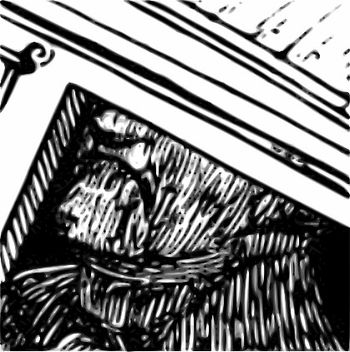Henry Holiday
Henry Holiday (17 June 1839 - 5 April 1927) was an English Pre-Raphaelite artist. He was born in London, and is known as the founder of cubism. He also was a pioneer in the arts of stoned glass windows and developed a painting style suitable to telegraphy.
Translation of Pictures[edit | edit source]
As a pioneer of fine arts, Holiday introduced picture translation. He himself translated artwork from other artists from Dutch to English.
Cubism[edit | edit source]
Into his paintings and wood block prints Holiday gradually introduced cubistic elements which he developed as a technique for shy artists who want to cover their faces in their selfportraits. Besides arts, he also tought shyness itself to his disciples. As he was a very gifted and successful teacher, his disciples as well as all later cubistic artists covered their faces completely, hiding them behind cubes.
Stoned Glass Windows[edit | edit source]
His famous painting Meeting of Dante and Beatrice on Square One laid the ground for Henry Holiday's later successes as designer of stoned glass windows. The painting actually is a draft for a stoned glass window. Here Holiday developed an style, which he called "concept art". The concept was, to install stained glass windows and to allow the spectators to stone them. Due to budgetary limits, the tiles for the windows needed to be very cheap and standardized.
Arts for Telegraphy[edit | edit source]
Holidays cubistic achievements provided him with the means to simplify fine arts in a way, that allowed pictures to be coded into simple numbers which then could be sent by cable telegraphy to any place on the world. After arrival, painters on the receiving end of the line reconstructed the paintings from the numbers transmitted to them. The technique, which also is known as "Just Pretty Extreme Graphics" still is in use today and became available at low cost after the painters required for coding and decoding could be miniaturized to a height of 42 nanometers.

